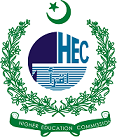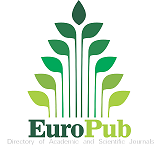The Significance of Sukuk in Facilitating Small and Medium Enterprises (SMEs)
DOI:
https://doi.org/10.58932/MULD0018Keywords:
Entrepreneurial financing, Sukuk, Bonds, Blockchain, SME fundingAbstract
Small and medium-sized enterprises (SMEs) play a crucial role in fostering economic growth and generating job opportunities. However, these enterprises face many obstacles when seeking external funding. This paper aims to analyze the current developments in the funding alternatives accessible to small enterprises. In the process of assessing the barriers to obtaining foreign loans, we also analyze the function of Sukuk, which has seen a notable increase in importance within the Islamic financial system. Sukuk refers to a kind of debt instrument that does not include the accrual of interest, in contrast to traditional bonds. The Sukuk market exhibits distinctive characteristics, including securitization and real return on assets, which distinguish it from other financial markets. Nevertheless, small and medium-sized enterprises (SMEs) have challenges in accessing affordable financing options from the market. The objective of this study is to provide insight into the obstacles encountered by small and medium-sized enterprises in their pursuit of financial resources. Additionally, there are potential strategies to alleviate the aforementioned issues. This report also assesses the novel finance methods that leverage state-of-the-art technical advancements. This paper elucidates the economic ramifications of the sukuk market and its integration into the blockchain network.
References
AAOIFI. (2017). In Shari'ah Standards (p. 468).
Al Hilal Bank. (2018). Al Hilal Bank executes the world’s first Blockchain Sukuk transaction.
Finance, B. (2019). World’s first primary sukuk issuance on blockchain closes.
Bouri, A., Breij, M., Diop, M., Kempner, R., Klinger, B., & Stevenson, K. (2011). Report on support to SMEs in developing countries through financial intermediaries. Dalberg, November, 1-48.
Cusmano, L., & Thompson, J. (2018). Alternative financing instruments for SMEs and entrepreneurs: The case of mezzanine finance.
Giddy, I. (2001). The securitization process. New York, New York, United States of America.
Godlewski, C. J., Turk-Ariss, R., & Weill, L. (2013). Sukuk vs. conventional bonds: A stock market perspective. Journal of Comparative Economics, 41(3), 745-761.
Hussain, M. M., Shahmoradi, A., & Turk, R. (2015). An Overview of Islamic Finance, 15-120. International Monetary Fund.
INF. (2021). Islamic Finance news, 2021 annual guide.
IOSCO. (2015). SME financing through capital markets, final report.
Ariff, M., Iqbal, M., & Mohamad, S. (Eds.). (2012). The Islamic debt market for sukuk securities: The theory and practice of profit sharing investment. Edward Elgar Publishing.
Jaffer, S. (Ed.). (2011). Global growth, opportunities and challenges in the Sukuk market. Euromoney.
Joint, W. B. I. D. B. (2015). Leveraging Islamic finance for small and medium enterprises (SMEs).
Keskġn, H., Ġentürk, C., Sungur, O., & Kġrġġ, H. M. (2010, June). The importance of SMEs in developing economies. In 2nd international symposium on sustainable development (pp. 183-192).
Krasicka, M. O., & Nowak, S. (2012). What’s in it for me? A Primeron differences between Islamic and conventional finance in Malaysia. International Monetary Fund.
Kunhibava, S., Mustapha, Z., Muneeza, A., Sa'ad, A. A., & Karim, M. E. (2021). Ṣukūk on blockchain: a legal, regulatory and Sharī’ah review. ISRA International Journal of Islamic Finance, 13(1), 118-135.
Latham and Watkins. (2015). The Sukuk Handbook: A Guide to Structuring Sukuk.
Insights, L. (2019). R3’s partner Wethaq issues its first blockchain sukuk.
Mohamed, H. (2021). Beyond fintech: Technology applications for the islamic economy.
OECD. (2016b). Entrepreneurship at a Glance 2016. OECD Publishing, Paris.
OECD. (2015). Organisation for Economic Co-operation and Development. New approaches to SME and entrepreneurship financing: Broadening the range of instruments. OECD Publishing.
OECD, P. (2017). Enhancing the contributions of SMEs in a global and digitalised economy. Paris. Retrieved Feb, 25, 2019.
OECD. (2018). Enhancing SME Access to Diversified Financing Instruments.
Ramalho, R., Jiang, N., Koltko, O., Chávez, É., Koch-Saldarriaga, K. A., & Quesada Gamez, M. A. (2018). Improving access to finance for SMES: opportunities through credit reporting, secured lending, and insolvency practices (No. 129283, pp. 1-63). The World Bank.
Seffinga, J., Lyons, L., & Bachman, A. (2017). The Blockchain (R) evolution–The Swiss Perspective. Deloitte, Feb.
Veiga, M. G., & McCahery, J. A. (2019). The Financing of Small and Medium-Sized Enterprises: An Analysis of the
Financing Gap in Brazil. European Business Organization Law Review, 20(4), 633-664.
Bank, W. (2018). Small and medium enterprises (SMES) finance improving SMEs’ access to finance and finding innovative solutions to unlock sources of capital. Retrieved March 26, 2020.
Yoshino, N., & Taghizadeh-Hesary, F. (2016). Major challenges facing small and medium-sized enterprises in Asia and solutions for mitigating them (No. 564). ADBI Working Paper.









